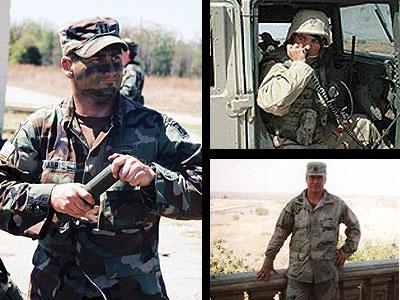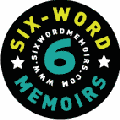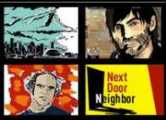My Ex: “A Couple of Times”
Monday, January 15th, 2007Read more reader stories about exes.
Sharon Fishfeld is the co-editor of Smyles & Fish, available in many forms and functions.
Have you ever seen those couples who look so unbelievably, so shockingly, so fuckingly sad? Not in the way that implies they’re unhappy or frustrated or even unfulfilled with one another. But more in that way that resembles a heavy mood dripping down the both—the jointed—of them, from top to bottom, in to out. As if they are mourning the birth of the great true love they are right in the middle of. They are so close and so on, and so on, they just can’t stand it anymore.
Their eyes are red with tears of self-congratulation.
Do you ever see them when you’re walking along—just you. Maybe you’re returning home the morning after what finally proved itself as a one-night stand, or you’re on your way to work, or you’ve just had your heart shredded only a week before and it gets weak at any sign of perforation. I don’t know what state you’re in, but you’re not in their state—not right exactly then, of course, because you’re walking alone—but also because you’re in a general point of “alone-ness” in your life. Maybe you’re dating. Maybe you’re dating but don’t even want to be, but certainly, despite how many sticks in the oven, or logs on the fire, you are not connected or attached or lovey or dovey with any of these logs of late.
+++
It’s too early in the day for this, you think, as you approach their morosity on a neighborhood park bench, her head collapsed on his shoulder, her eyes peering around wide for their audience or admirers or—such as you—the innocently inevitable passersby. They’re hugging and kissing and obviously tender with each other so what could possibly be so wrong that they look two swipes away from slash-wristed double suicide?
They’re grasped tight. They’re young. It’s not that they’re resisting commitment to someone, that they hadn’t expected or wanted to do that. It really does not appear so. Even if anything had been unexpected between them, they’ve still embraced it all, as they now do each other, as if a tidal wave were approaching. You, you’d get carried off alone, you think, if it came in, and in some cases that might be better, you may be at an advantage not having another soul anchoring you down.
You approach them, adjust your skirt or tie or pants. Think about pulling out your phone. Any fidget to distract. You have other things going on besides passing them by, or feeling something for them. The sadness! Their sadness! But why?
They are caving the entire sidewalk in with their weight of reciprocal love.
“Is it so terrible that you’ve found each other?” You want to hiss at them; snap your jaw and be on your singular way.
Was it that the challenge or the hunt was over and they were comforting each other as they came down from prior highs of the dating scene and were now accepting their plateaud fate of future togetherness? “Yeah, doesn’t it just suck when you like realize you’re never gonna date again?” you think to quip at them—in that way, with that cadence that means you’re intending to communicate the exact opposite of what you’re saying. Because in truth you feel nothing for them, except nothing. Including frustration at the gloating gall of it all. Go droop on someone else’s time. You two look close enough, and even happy enough, to me. You’ve concluded and you continue on.
Then—there you are on another day, sitting in the park with your last love. You meet up on a sunny day, on a blanket on the ground, for conversation and books; it had been months and you were finally both ready to be around each other again, in theory. As the sun moves its way along the water, reflecting on alternating ripples, your bodies get closer to each other on the blanket, how it used to be in the park. Your body can’t help but smell familiarity, and is drawn. Drawn in close with a push and pull. Drawn on the page like some pre-determined event in your fated life. Drawn on your palm like a life line. All of a sudden your palm is pressed onto his back and his hand (or is it her hand?) is rubbing your hair and the space of skin behind your ear. You’re laying next to each other, closer and closer, your eyes meeting and darting away and daring to return for another look. Pins and needles thread their way through your heart and body; it’s unbelievable that here you are, back here, back in a gaze. It’s passing, it’s recollection. You’re both big enough to understand that. Still, of course, there is the fact of history, the fact of attraction and potential. It’s more than you’d thought you’d bare on this blanket, on this sunny day.
Everything feels weighted and keeps you close to the ground. Your eyes on him, your eyes to the grass, your eyes to the water, your eyes that pass over one person or another. Eyes wide and watery, floating in confusion. Regret, sadness, grief of this lost love. Did you just not get a good grip on it? What if you wore gloves next time? You know, the kind with the grooves in them? But are you really contemplating a “next time” together? Just because the sun is hitting just right and your hands feel just right as they rub and scratch and knead and need and apologize that they couldn’t have done more to keep you two together.
It’s relieving and frightening and comforting and depressing to be around each other, so close, your legs around his legs.
+++
And as a stranger walks by, and your eyes speak only exactly what you are going through in that moment on the blanket in the neighborhood park, when it must look like you are a couple snuggling in love, you wonder now whether this is what you’ve been bumping into when you have been the stranger, walking alone. Are you in fact encountering non-couples, past-couples, re-couples, two-somes reconsidering their end, revisiting their feelings towards one other?
Is this who everyone is? Because this is who you are now. And you can’t pipe in and clarify to the passing stranger who’s just noticed your ridiculous, begging eyes: “No, you don’t understand, we’re not together, we don’t work together, we tried, believe me we tried, we really wanted it to work out, and for so many reasons, but it just…it just never got there, we couldn’t ever figure it out either. Strange because we care for each other, are attracted to each other, admire each other. Believe me, we tried. This is not us trying again, either, by the way, this is just us in the park, after a pause after the defeat. This, this is not what it looks like. This actually is sadness.”
And the passing stranger would think, and maybe even say, “Look, whatever it is, you’re on a blanket with someone who’s touching you. Touching your hair, and your heart.” They might sigh right there, and continue. “It may be fleeting, it may be recollective, it may be confused sensory memories. It may be loneliness. It may even be rebirth—though you two seem pretty adamant to the contrary—but whatever it does amount to, is it not to be cherished? Is it not more than what I have at the same exact moment in time? This moment. Right now. Human love is yours right now, even if only right now, but right now. You’re in the middle of living it.
So, honestly, don’t even tell me, because I’m leaving, and I don’t care, but take the time to ask yourself if you can: Why is it that you have to look out, look around, and look so sad?



 The Taliban’s destruction of the
The Taliban’s destruction of the  Patti Smith’s
Patti Smith’s  Accidental hobby, budding fetish or personal media art piece? Call my pregnant women series what you want, but there’s no denying the beauty in the shots and the stories of the women
Accidental hobby, budding fetish or personal media art piece? Call my pregnant women series what you want, but there’s no denying the beauty in the shots and the stories of the women 














 Davy Rothbart and I started FOUND back in 2001 as a collaborative project for people to share the hilarious, strange and heartbreaking stuff that they found as they went about their lives. It could be a grocery list on a Post-it note or a dirty drawing on the back of a spiral notebook - if it was interesting, it was fair game.
Davy Rothbart and I started FOUND back in 2001 as a collaborative project for people to share the hilarious, strange and heartbreaking stuff that they found as they went about their lives. It could be a grocery list on a Post-it note or a dirty drawing on the back of a spiral notebook - if it was interesting, it was fair game.














